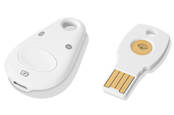Brilliant Boston boffins blow big borehole in Bluetooth’s ballyhooed barricades: MAC addy randomization broken
A team of US academics have proposed a simple method to defeat the Bluetooth LE standard’s anti-tracking measures.
David Strobinski, David Li, and Johannes Becker at Boston University told The Register how they found that the MAC randomization system of Bluetooth LE, designed to thwart the tracking of devices, transmits packages of data that can still be used to uniquely identify, and thus track the location of a mobile phone or PC.
As Bluetooth SIG explains, the randomization allows Bluetooth devices to wirelessly communicate (via data transmissions known as advertising packets) while still staying anonymous:
In order to allow connections, however, the device still has to be able to identify itself with other hardware. To do this, it sends a string of unique data along with the MAC address in the advertising packet
“The payload sent here is information only relevant to the device,” Becker told El Reg today. “We are just interested in how unique this information is.”
More importantly, like the MAC address, the unique payload can be set by the vendor to refresh itself at regular intervals.
And here, the researchers found, was where the fundamental weakness of the system was exposed. Starobinski, Li, and Becker discovered that because the MAC address and the payload do not change over at the same time, each could be used to continue identifying the gadget or computer.
In other words, as long as the listener knows either the MAC address or the unique payload, they can keep identifying the device even when one of the strings changes. Thus, the listener can keep tabs on a nearby gizmo, knowing it is still within range even as the MAC or payload changes.
In a series of tests spanning several months, Starobinski, Li, and Becker passively eavesdropped on mobile phones (Android and iPhone), PCs (Windows 10 and MacOS) and smartwatches (BlackBerry) to monitor when and how both the MAC addresses and payloads changed over time.
While the time intervals depended on the vendor, in most cases the researchers said they could reliably identify a device over readings taken minutes, and sometimes hours, apart. In the field, this means a listener with one or more devices could still track the movements of a device over time even if its MAC address kept changing.
“The experiments were done listening continuously, but what we found is these addresses change in minutes or hours depending on the devices,” Becker explained. “It is enough to listen in periodically, as long as we don’t miss any changes, then piece them together.”
Fixing the design flaw will not be a simple task, however. While having both the MAC address and the unique payload change at similar times would close the overlap period that allows identification, even that could be predictable if not properly implemented.
“If everybody does this in a predictable manner you can see when they change,” noted Starobinski, “so the second component is to randomize the change.”
What is perhaps even more concerning, say the Boston Uni trio, is the message Bluetooth vendors are putting out to the public when they advertise Bluetooth LE as being an untrackable standard.
“The fact is this protocol allows this behavior and doesn’t point out these issues,” said Becker. “The Bluetooth specification allows bad behavior, or just negligence, to defeat the anti-tracking measure.”
Starobinski, Li, and Becker plan to present their paper [PDF], Tracking Anonymized Bluetooth Devices, at the 19th Privacy Enhancing Technologies Symposium in Sweden on July 17. ®
Sponsored: Balancing consumerization and corporate control
READ MORE HERE

